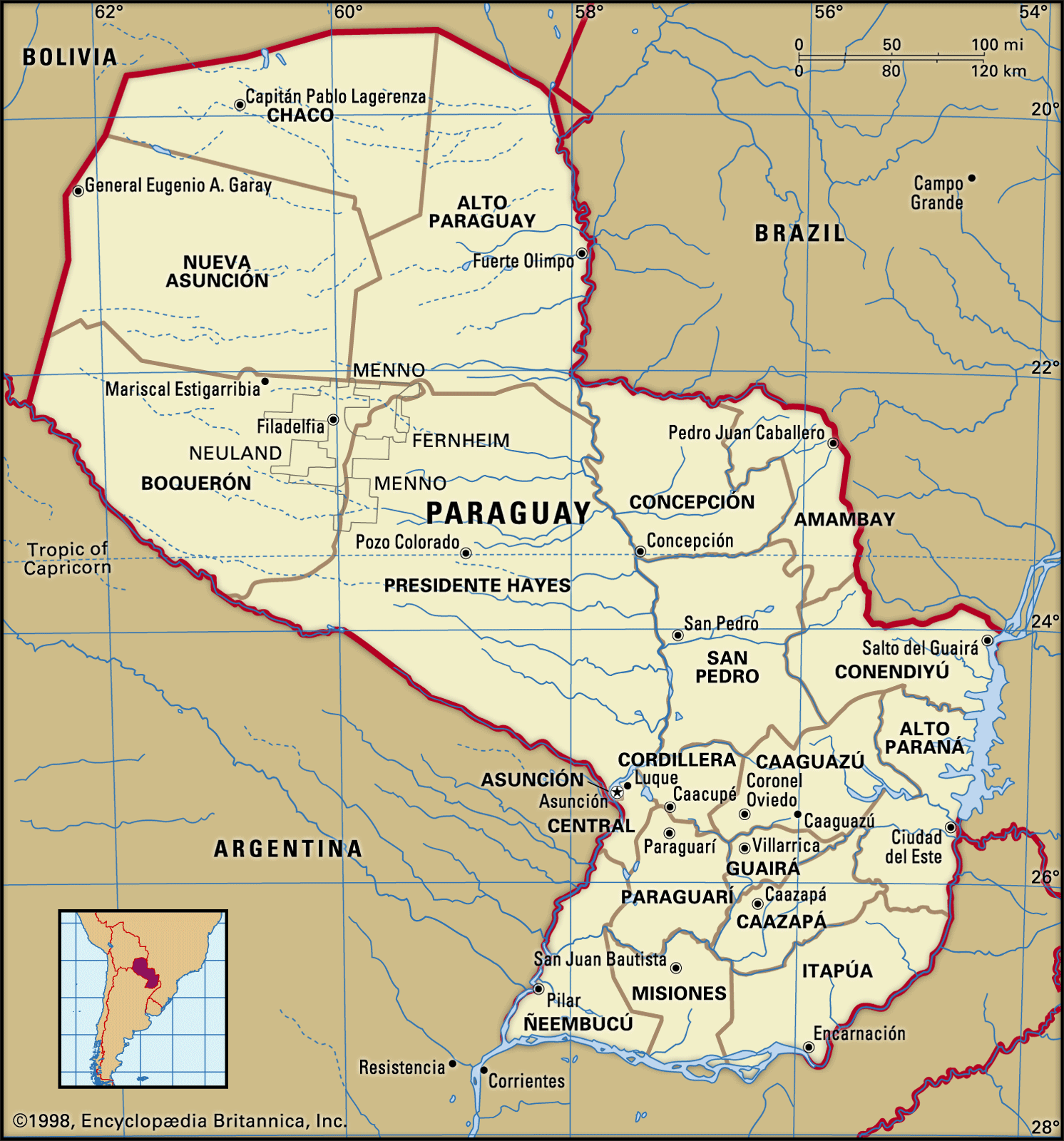In this episode of 80 Days: An Exploration Podcast, we’ll be talking about Paraguay, a small South American nation sometimes referred to as the “heart of South America”, bordered by Argentina to the south and southwest, Brazil to the east and northeast, and Bolivia to the northwest. One of only two landlocked countries in South America, the other being Bolivia, Paraguay was home to a number of Native Indian groups, most prominently the Guarani, before being colonised by Spanish conquistadores in the early 1500s.

During the 17th century, Paraguay became home to a large number of Jesuit missions, where the native Guaraní people were settled and converted to Christianity. Following independence from Spain in the early 19th century, the country was involved in a number of regional conflicts and subject to the whims of numerous dictatorial governments. This period culminated in the disastrous Paraguayan War, which began in 1864 and resulted in the country losing up to half of its prewar population and up to a third of its territory. Since colonisation, the Guarani culture, language and traditions have remained integral to the country’s national identity, and the majority of modern day Paraguayans are mestizo, descending from a mix of settlers and Guarani. The country has around seven million inhabitants today, and has a land area of around 400,000 sq km or 150,000 sq miles, comparable in size to Norway and slightly smaller than the US state of California. Despite a history of poverty and political repression, Paraguay often ranks as the “world’s happiest place” based on global polling data.
Your hosts, as always, are Luke Kelly @thelukejkelly in Dublin, Ireland, Mark Boyle @markboyle86 in the UK, and Joe Byrne @anbeirneach in Galway, Ireland. Our theme music and other stings come from Thomas O’Boyle @thatthomasfella.
Some further reading:
- Do your homework if you haven’t already and check out our Uruguay episode from way back in season 2.
- Read more on the Jasuka Venda discovery of human habitation dating to 5,000 years, displaying “footprint style rock art”
- More on the indigenous groups, including the Payaguá (whence the name Paraguay), Guaycurú, M’bayá, Abipón, and Chiriguano.
- Historian Adalberto Lopez has written extensively on this region. His book on the The Revolt of the Comuñeros, 1721–1735 can be found here.
- For more on the life of the Guarani and how their traditions have persisted through to the modern day, check out this video, which Joe mentions toward the end of this episode.
- The trailer for period film The Mission, in all its glory, can be found on YouTube.
- The UNESCO World Heritage website has more on the Jesuit Missions of La Santísima Trinidad de Paraná and Jesús de Tavarangue.
- The Library of Congress also has a wealth of info on Paraguay which can be found here.
- Wikipedia has a whole article dedicated to the unique Paraguayan Flag.
- This fascinating video shows how the Paraguayan War played out day by day using map visualisations.
- Military Wiki also has an extensive article on Francisco Solano Lopez, who is discussed at length in this episode.
- Historian Leslie Bethell has written a paper on the Paraguayan War which can be found here.
- Thomas L Whigham’s book The Paraguayan War: Causes and Early Conduct, quoted in this episode, is also available in its entirety online is here.
- Eliza Lynch has an extensive page over on Wikipedia.
- The two 150th anniversary articles referenced on the impact of the war on Paraguay are available from The Economist and The Guardian.
- The New York Times has an article on the 1887 Nueva Germania colony that Joe speaks about in his second section.
- TIME has a piece on the Nazi outposts in San Bernadino that are discussed in this episode, as does OZY.
- The US Library of Congress has a short paper on Paraguay and WWII.
- Read more on Paraguay’s hydropower capabilities at hydropower.org.
- José Felix Estigarribia, who Mark discusses in this episode, is profiled here at Britannica.
- The graphic below gives an interesting indication of the plurality of languages spoken in Paraguay in the modern day.

- For more on food, check out Culture Trip for 6 Traditional Foods You Have to Try in Paraguay
Some music by composers from in and around this region include:
- Sanapana music from the Gran Chaco tribe, taken from this video.
- The polka song, written in Guarani by Emiliano Fernandez about the Chaco War and performed by Romón Vargas Colman, can be found here.
- We also include some Paraguayan Harp in this episode, which you can find more of here.
- For a selection of music from Augustin Barrios, one of Paraguay’s most famous musicians, click here.